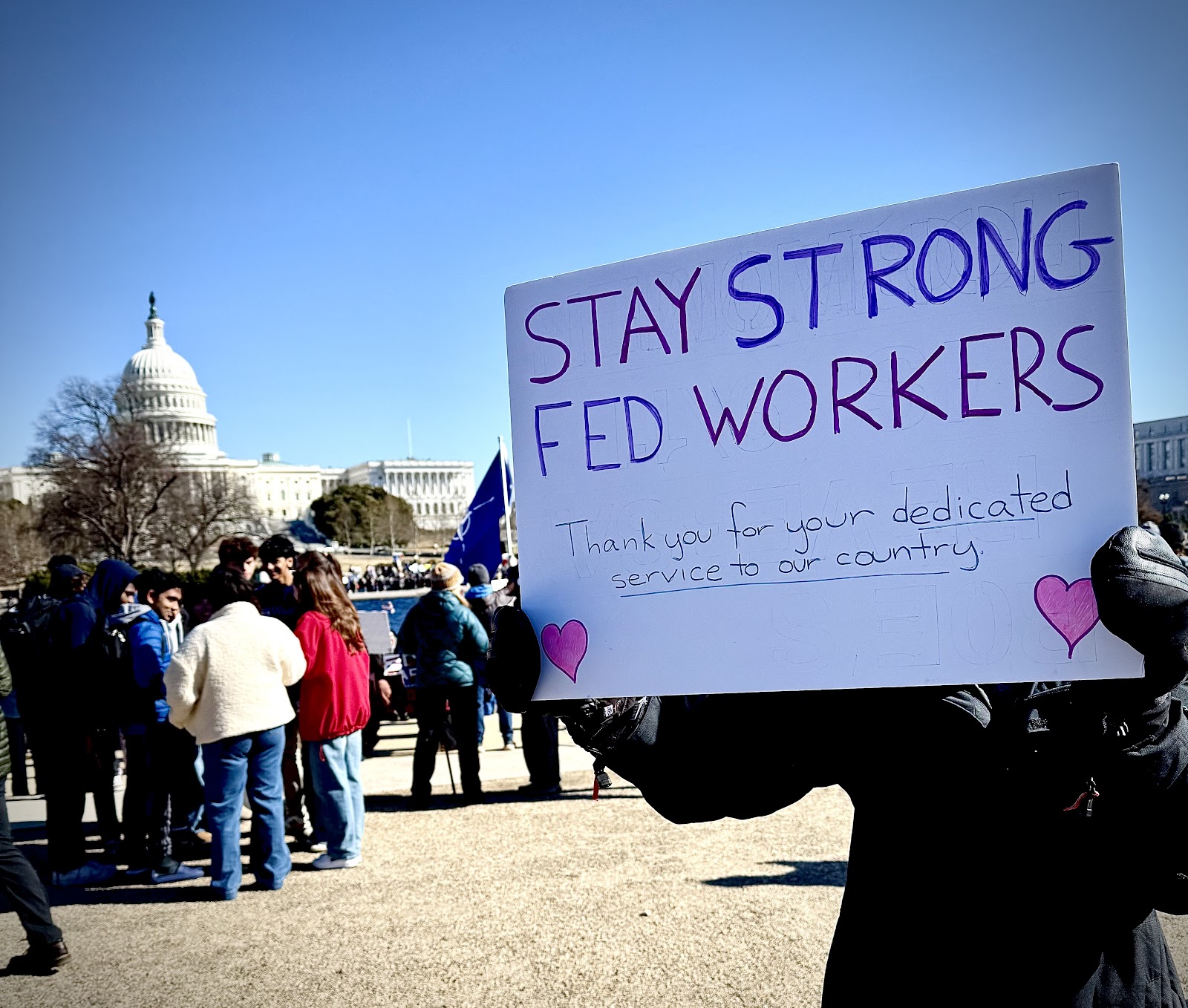We are in unprecedented times for protesting. April 5th has the potential to be the largest protest in America. In my 40-plus years of attending protests, well over 50 at this point (I’ve honestly lost count), I have never experienced violence at a protest. These gatherings were passionate, sometimes tense, but ultimately peaceful. We are in different times now, and different times call for different measures.
The climate has shifted. We’re seeing increased militarization of police,
more aggressive counter-protesters, fake protesters inciting violence, and a
heightened sense of surveillance. That doesn’t mean we stop showing up, but it
does mean we show up smarter, more prepared, and more connected to each other. Whether
you're a seasoned protestor or attending your very first rally, having a plan,
knowing your surroundings, and prioritizing safety are essential. Social
workers are not only standing up for justice, we are modeling how to do it in a
way that centers community. Be constructive not destructive.
Protest is powerful. It’s an act of hope, resistance, and solidarity.
It’s where voices rise together to say, “We see what’s happening and we won’t
be silent.” But while protests can be transformative, they can also be
unpredictable. Whether you're attending a peaceful rally, a march, or a sit-in,
being prepared can make all the difference between feeling empowered and
feeling vulnerable.
One of the most concerning dynamics at modern protests is the presence of
fake protesters, individuals or small groups who attend rallies not to support
the cause, but to incite violence, sow seeds of chaos, and manipulate public perception.
These agitators may dress like protestors, chant like protestors, and then
suddenly act out in ways that are deliberately provocative, throwing objects,
vandalizing property, or antagonizing law enforcement. Their goal isn’t
justice; it’s disruption. This tactic is used to create emotional contagion, a
psychological phenomenon where fear and anger spread quickly through a crowd,
escalating tensions and leading to confusion. The result? A carefully
manufactured narrative that paints protestors, particularly those aligned with
progressive or democratic movements, as dangerous, violent, and irrational.
It’s a strategy of disinformation and division, and it’s more common than we’d
like to believe. Staying grounded, observing critically, and refusing to be
baited by performative aggression are essential forms of resistance.
Before you go: What
to Pack in a Go Bag
A small backpack or sling bag is your protest first aid. It should be
light but purposeful. Here’s what to pack:
- Water (preferably in a reusable
bottle): Staying hydrated is key.
- Snacks (like granola bars or trail
mix): Protests can be long and draining.
- Face mask, sunglasses and hand sanitizer: For
health and anonymity.
- ID (a passport due to ICE): Laws
vary by location, but know your rights about identification.
- Cash (small bills): In case you need
transit fare or can’t use your phone.
- Basic first aid kit: Band-aids, antiseptic wipes,
allergy meds, etc.
- Eye protection (goggles): In case of tear gas
or pepper spray.
- Bandana soaked in vinegar/lemon
juice, sealed in a baggie: A folk remedy for neutralizing tear gas fumes
(note: its effectiveness is debated, but some swear by it). Don’t use
milk! It doesn’t work and it can carry bacteria.
- Know Your Rights card or legal aid contact info: Many
advocacy orgs have printable resources.
- Extra phone battery or charger: You’ll likely be taking photos,
coordinating, or live-streaming.
- Notepad and pen: Low-tech backup to record badge
numbers, incidents, or reflections.
- Medication: Any essential meds you need for
the duration you're out and a plus day.
- Comfortable shoes: You’ll be walking, standing,
maybe running.
- Phone numbers of important people: If your phone is taken away
this list will be a saving grace if you need help.
- Delete social media and communication
apps: Disable facial or finger print recognition. One needs a warrant to
get into your phone with a password.
During the Protest: Stay
Aware of Your Surroundings
Situational awareness isn’t about fear, it’s about mindfulness. Here’s
what to watch for:
- Exit routes: As soon as you arrive, clock
the exits. Alleys, open streets, friendly stores, know how you’d leave if
needed. In a similar vein, these exit routes can also be ways for vehicles
to be used as weapons. Mindfulness is key.
- Crowd dynamics: Peaceful doesn’t mean static.
Crowds ebb and flow. If the energy shifts, chanting gets aggressive,
police lines form, stay calm and observe.
- Law enforcement presence: Note where officers are
stationed. Watch for increased gear (riot helmets, shields) or tactical
changes.
- People behaving differently: If someone is instigating
violence, tagging property, or escalating conflict, they might not be
aligned with the movement's goals. It’s okay to walk away or call
attention to the behavior.
- Watch your group: If you came with others, make a
buddy system. Decide on a meeting spot in case you get separated.
What happens if? Signs of Escalation
& What to Do
- Change in police stance (batons out, mounted units, gas
masks): Assume the situation may shift fast.
- Unmarked vehicles or detainments: These may not look like
“official” arrests—don’t intervene physically, but document from a safe
distance.
- Dispersal orders: These may be verbal or through
sound devices. If one is issued, follow directions calmly, and leave
quickly if possible.
- Flashbangs, tear gas, or rubber
bullets: Cover your mouth, move away from the source, stay low, and seek
clean air.
- De-escalation: If you have not been trained to
de-escalate violence move away from the situation to a safe distance. Let
the people trained to curb violence do their part and step back. A team of
social workers did this at DC’s BLM protests successfully.
Lastly, Stay True to You:
Trust your instincts. If your gut says “it’s time to go,” listen to it.
Protests are part of social work history and praxis. From civil rights to labor rights to the fight for trans liberation, we’ve always stood shoulder to shoulder with our communities. But we can’t care for the collective without caring for ourselves. Bring your values, your preparation, and your courage. Speak truth. But also remember, your safety matters. You can’t pour from an empty cup.
I will see you at the protests!
Resources and References:
National Lawyers Guild Legal Observer Program: https://www.nlg.org/our-work/legal-support/legal-observer-program/
Safety Planning for Protests (Amnesty International): https://www.amnesty.org/en/latest/news/2020/06/usa-safety-tips-for-protesters/
Protest Safety Guide (Black Lives Matter DC): https://www.blmdc.org/protest-safety-guide/
Digital Security for Protesters (Electronic Frontier Foundation): https://www.eff.org/deeplinks/2020/06/digital-security-and-privacy-tips-protesters



